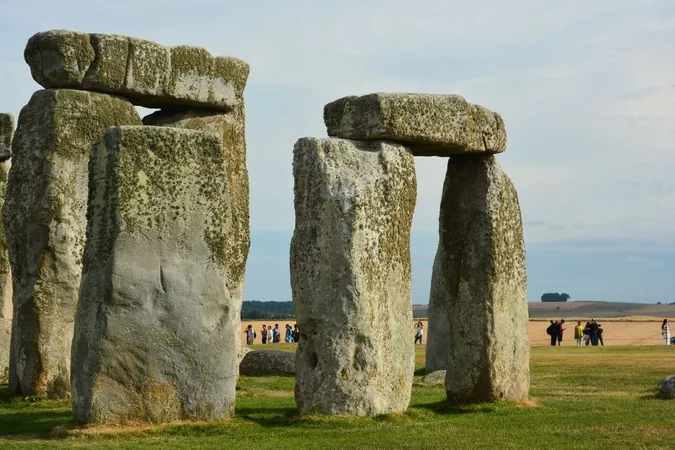
Unearthing the Past: Is an Ancient Burial Site the Missing Link to Stonehenge's Origins?
2025-04-07
Author: Yan
Introduction
Archaeologists have made a groundbreaking discovery that could revolutionize our understanding of Neolithic Britain! The Flagstones burial site, nestled in Dorset, England, has been re-dated to around 3,200 BC—making it a staggering 200 years older than initially believed. This intriguing revelation positions Flagstones as the earliest known large circular enclosure in Britain, potentially serving as a model for the awe-inspiring Stonehenge and other monumental sites.
Connecting the Dots with Other Neolithic Sites
Researchers from the University of Exeter and Historic England have published findings that not only reshape the timeline of Neolithic Britain but also spark new inquiries into the origins of ceremonial and burial structures. The Flagstones site exhibits links to other essential Neolithic monuments across Britain and even further afield. Fascinatingly, it shares characteristics with Llandygái Henge A in Gwynedd, Wales, as well as significant locations in Ireland, suggesting a web of ancient connections across the region.
Dr. Greaney emphasizes that the Flagstones site "looks like monuments that come earlier, known as causewayed enclosures, and some elements resemble those of later structures called henges." This deeper exploration reveals that Flagstones occupies a unique position in the evolutionary timeline of these monumental constructions.
The Structure: A Peek Into the Past
Spanning a diameter of 100 meters, the Flagstones site is characterized by a circular ditch created through a series of intersecting pits, likely supporting an earthen bank. However, much of this historic site now lies beneath modern developments, such as the Dorchester bypass and Max Gate, the former residence of renowned novelist Thomas Hardy.
Excavations have unearthed at least four burials within the circular enclosure, including one cremated adult and three children who were not cremated, along with partial adults' cremations scattered around the site. Remarkably, these burial practices echo the designs seen at Stonehenge, particularly during its initial phase, which is believed to have started around 2,900 BC.
A Crucial Piece in Understanding Neolithic Rituals
The re-dating of Flagstones is pivotal in piecing together the chronology of ceremonial and burial monuments in Britain. This informs us about the dynamic nature of Neolithic rituals that evolved over time. Radiocarbon dating indicates that early Neolithic activities, such as the creation of pits, began around 3,650 BC.
The enclosure itself was formed around 3,200 BC, with subsequent burials occurring almost immediately. Intriguingly, one burial found beneath a large sarsen stone in the center of the site dates back approximately 1,000 years after the enclosure's initial utilization, highlighting a continuum of ritual significance at the site.
Conclusion
Could Flagstones indeed be the secret blueprint that influenced the majestic Stonehenge? As discoveries continue to unfold, the connections between these ancient sites deepen our understanding of human history and our ancestors' intricate relationship with their environment. Stay tuned, as more revelations are sure to emerge from this captivating era of our past!



 Brasil (PT)
Brasil (PT)
 Canada (EN)
Canada (EN)
 Chile (ES)
Chile (ES)
 Česko (CS)
Česko (CS)
 대한민국 (KO)
대한민국 (KO)
 España (ES)
España (ES)
 France (FR)
France (FR)
 Hong Kong (EN)
Hong Kong (EN)
 Italia (IT)
Italia (IT)
 日本 (JA)
日本 (JA)
 Magyarország (HU)
Magyarország (HU)
 Norge (NO)
Norge (NO)
 Polska (PL)
Polska (PL)
 Schweiz (DE)
Schweiz (DE)
 Singapore (EN)
Singapore (EN)
 Sverige (SV)
Sverige (SV)
 Suomi (FI)
Suomi (FI)
 Türkiye (TR)
Türkiye (TR)
 الإمارات العربية المتحدة (AR)
الإمارات العربية المتحدة (AR)